Tanzania is a vast country and a natural gem. Its safari experiences are divided into north, south and west.
With its Serengeti and Ngorongoro wildlife splendour, the north is the most popular destination. Selous and Ruaha parks of the south are significantly less touristy, and their big five safaris are just as impressive.
The western areas of the wild Mahale Mountains and Gombe offer exciting chimpanzee trekking and are only visited by about 4-5% of the tourists.
I've been on several safaris through Northern, Western and Southern Tanzania over the years. I can honestly say that each experience has given me a deeper appreciation of efforts made towards wildlife and nature conservation in East Africa.
In this article, I'll share my insights on the 13 best national parks and what you can expect while planning the ultimate Tanzania Safari experience.
Let's get started.
My Quick Takeaways:
In a rush? Here’s what you need to know about Tanzania safaris at a glance:
Top Safari Destinations:
- Northern Circuit: Serengeti (Great Migration), Ngorongoro Crater (Big Five).
- Southern Circuit: Selous (untouched wilderness), Ruaha (elephants & baobabs).
- Western Circuit: Mahale & Gombe (chimpanzee tracking).
Best Time to Visit:
- June - October: Best for wildlife spotting in the dry season.
- November - May: Lush scenery, fewer tourists, great for birdwatching.
Also see the best time to visit Tanzania for more info.
Safari Types:
- Game drives, walking safaris, and boat safaris (Selous).
Where to Stay:
- Luxury lodges: Premium locations & comfort.
- Tented camps: A mix of adventure & comfort.
- Budget campsites: Affordable options.
For a full breakdown, check out my complete article!
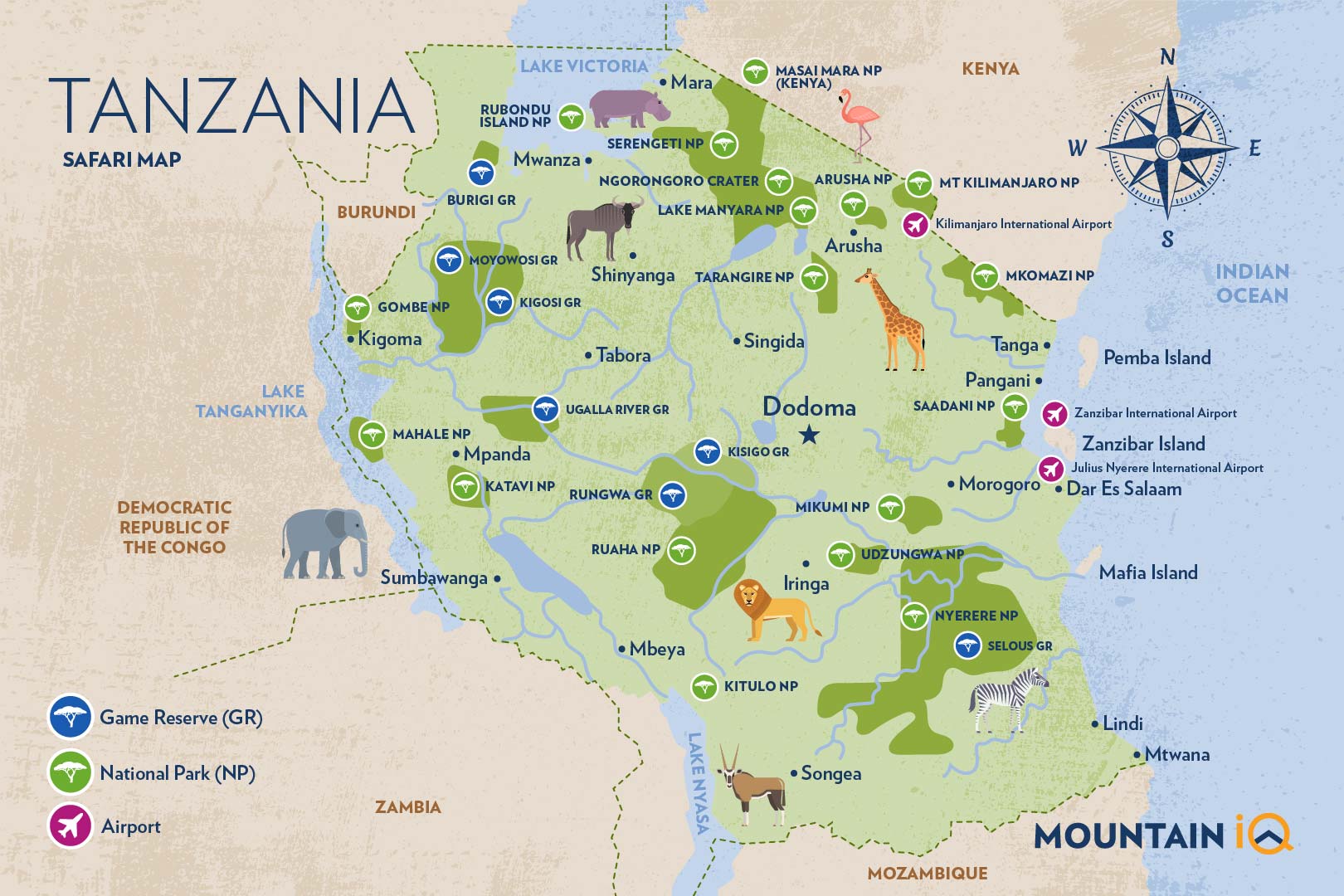
Before we dive into the Tanzania Safari FAQs, it would be a good idea to first orient yourself with my user-friendly map of Tanzania above.
As you can see, Tanzania is a massive country filled with 17 national parks and 7 game reserves. It's no wonder that it's fondly nicknamed 'Safari Country' - quite apt for planning an epic Tanzania Safari, I'd say.
Without further ado, let's dive into the Tanzania Safari FAQs!
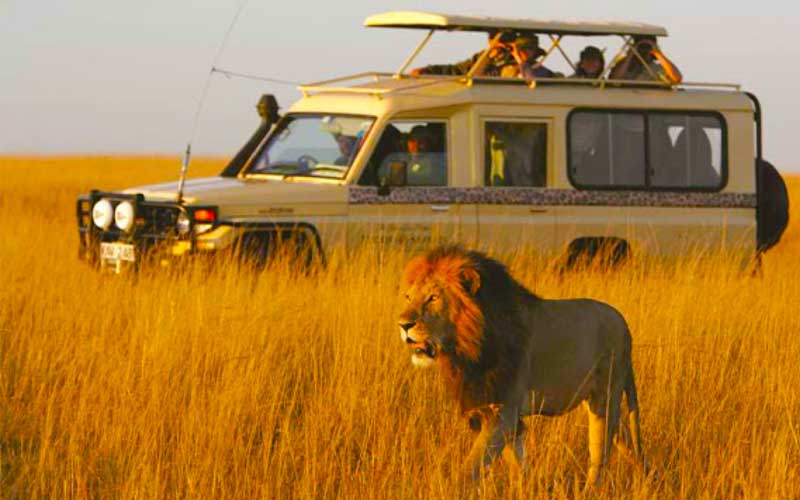
Plan your Safari experience
Check out these amazing deals on epic safari experiences now.
Tanzania Safari FAQs
When is the best time for a Tanzania Safari?
The dry season from June to October is the best time for a Tanzania Safari. The temperature averages between 20⁰C (68⁰F) – 30⁰C (86⁰F) in the dry season.
You will be able to spot most animals during a game drive in the daytime. Walking safaris are more pleasant as well, but remember to wear a hat and sunscreen.
The Tanzanian climate is split into two distinct seasons:
- Dry season - June to October
- Wet Season - November till May
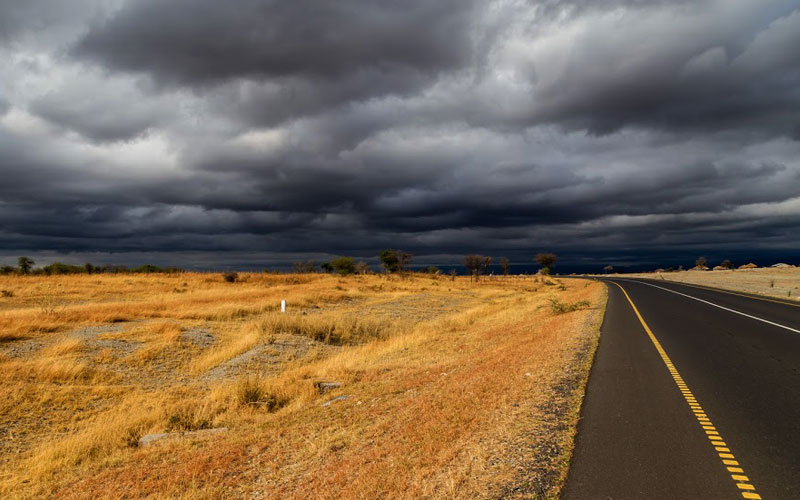
What should I pack for a Tanzania Safari?
Apart from your travel essentials like passport, vaccination identification, prescription medication and camera, you should pack some safari clothes and a few other items for a Tanzania Safari.
Safari clothing is best layered for various weather. Be sure to also bring along these items too:
- a few pairs of comfortable underwear
- long sleeve shirt or T-shirt
- convertible trousers
- walking shoes and socks
- a hat
- a scarf to cover your neck and face if required
- regular sandals
- swimsuit
- light raincoat or poncho
- an outfit for dinners at the lodges
See more on my ultimate Tanzania Safari packing list.
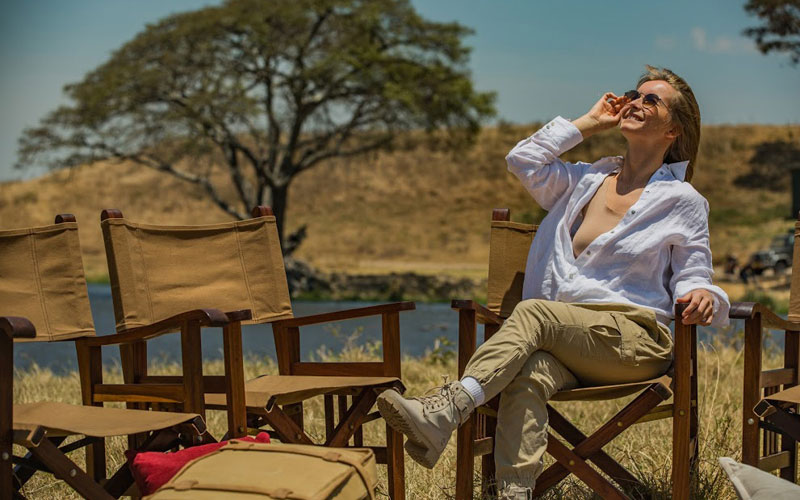
Is Tanzania dangerous for tourists?
Tanzania is safe to visit, especially if you’re travelling as part of an organised tour.
Guides are travel specialists and will know which areas to avoid. Pickpocketing and theft are common in big cities, but are less of a concern while on safari in more remote parts of Tanzania.
If you are visiting Tanzania alone, it would be wise to take a reliable local guide with you on safari.
You should ask the hotel management about the areas you must avoid. It’s also a good idea to refrain from walking around alone and at night.
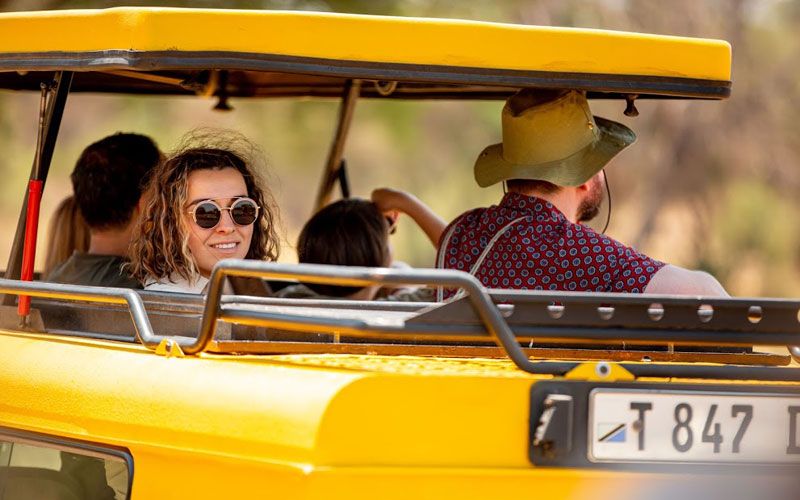
What are the most popular national parks for a Tanzania Safari?
The most popular national parks for a Tanzania Safari are without a doubt the Serengeti, Ngorongoro, Gombe, Mahale, Ruaha and Selous.
That's not to say there aren't other incredible national parks that tourists like to visit.
I'll talk more about each safari region in Tanzania and what you can do at each national park in this article.
As a large country with immense wildlife and other natural beauty, Tanzania can roughly be divided into northern, southern and western safari circuits.
Northern Circuit parks are usually visited by an absolute majority of travellers since they offer the classic Big Five wildlife viewing.
The parks include Serengeti National Park, Ngorongoro Crater National Park and Lake Manyara National Park.
Southern Circuit parks, like Selous and Ruaha, are visited by about a quarter of all tourists and offer similar Big Five wildlife viewing experiences. Big Five animals include lion, leopard, elephant, rhino and buffalo.
Western parks are famous for their chimpanzee tracking safaris in the Mahale Mountains and Gombe National Park, as well as the largest buffalo herds in the world seen in Katavi.
Which tour? Here are 5 Serengeti safari tours I highly recommend:
- Group Camping Safari that includes Tarangire and Ngorongoro (4 days)
- Budget Serengeti Safari (5 days)
- Scenic Northern Tanzania Safari (7 days)
- Serengeti Trail that includes Ngorongoro (8 days)
- Best of Kenya and Tanzania (incl. 6 national parks) (12 days)
See more Serengeti safari deals.
What parks can I visit in the Northern Circuit?
That's easy. You can visit six national parks in the Northern Circuit:
- Serengeti
- Ngorongoro
- Lake Manyara
- Tarangire
- Arusha
- Mount Kilimanjaro
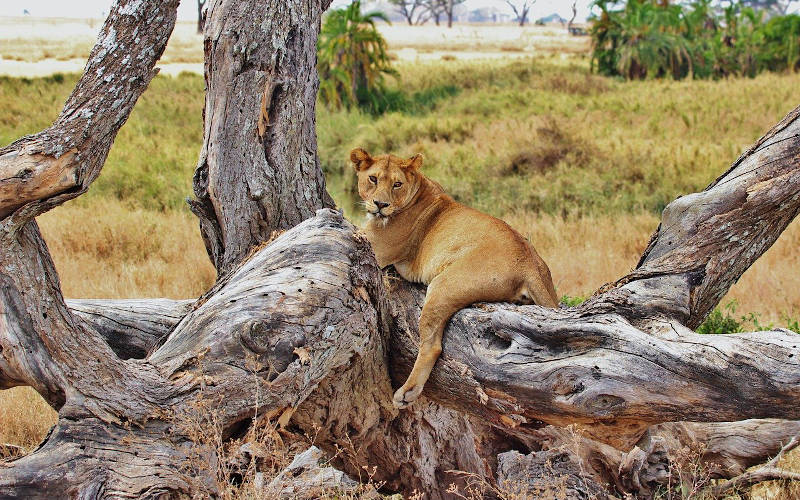
A lioness relaxing on an old acacia tree in the Serengeti
What can I do at Serengeti National Park?
There are numerous things you can do at Serengeti National Park, like tracking the Great Wildebeest Migration, viewing the Big Five and hot air ballooning.
A UNESCO World Heritage Site and Tanzania’s oldest reserve, Serengeti is best known for the Great Wildebeest Migration, taking place from late January to September. It is a classic safari destination attracting the largest number of predator animals in the world.
During the Great Migration to the border of the Masai Mara National Park in Kenya, the plains are full of herds of wildebeest, zebra, and gazelle – exceeding over 2 million animals.
Predators tend to trail the herds, picking off the weak, so you can expect to see their hunt quite close.
The best time to see predation is during the calving season from late January to February. The Seronera area gets very crowded during the dry season from June to October.
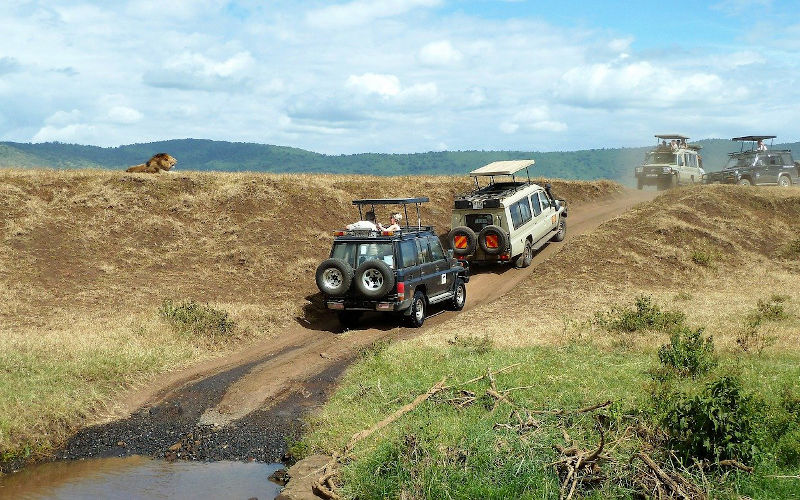
Safari jeeps in Ngorongoro National Park
What can I do at Ngorongoro Crater Conservation Area?
There are numerous things you can do at Ngorongoro Crater Conservation Area, like visiting the million-year old crater, viewing the Big Five, or enjoying a Masai Village cultural visit.
Ngorongoro has all the safari highlights in one spot: you can see the Big Five in one day, and predators and the black rhino are relatively easy to spot, among the stunning scenery.
Here you can also encounter black-backed jackals and spotted hyenas, as well as see large flocks of flamingo at Lake Magadi.
And of course, there’s the Ngorongoro Crater. This is the most popular crater in Tanzania. It has a forested rim and a grassland crater floor, ideal for spotting elephants.
Whilst wildlife viewing is great all year, the wet season is more beautiful with lush vegetation. But the long grass can make wildlife viewing more difficult. The crater itself gets crowded all year and the entrance fee is quite high.
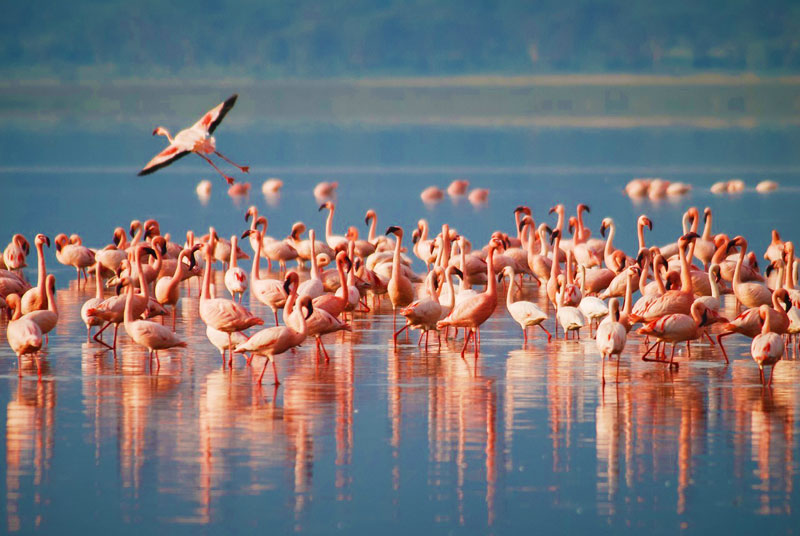
Pink flamingos enjoying Lake Manyara
What can I do at Lake Manyara National Park?
There are numerous things you can do at Lake Manyara National Park like canoe safaris, night drives to view the wildlife or taking an enjoyable walk along the famous Treetop walkway.
Small yet bountiful, Lake Manyara National Park is at the base of the Rift Valley escarpment. The park has a diverse habitat, from the alkaline lake to the grassy floodplains and acacia woodland.
The stunning groundwater forest is home to troops of blue monkeys and olive baboons. And let’s not forget the Majo Moto hot springs.
Whilst the wildlife is not as prolific as in some other parks, there is a large elephant population and tree-climbing lions, who are hard to spot. Other wildlife includes buffalo, giraffes, and several species of antelope.
Wildlife viewing and birdwatching are good all year, which makes the park crowded and pricey. To avoid the afternoon rush, enjoy a morning safari instead.
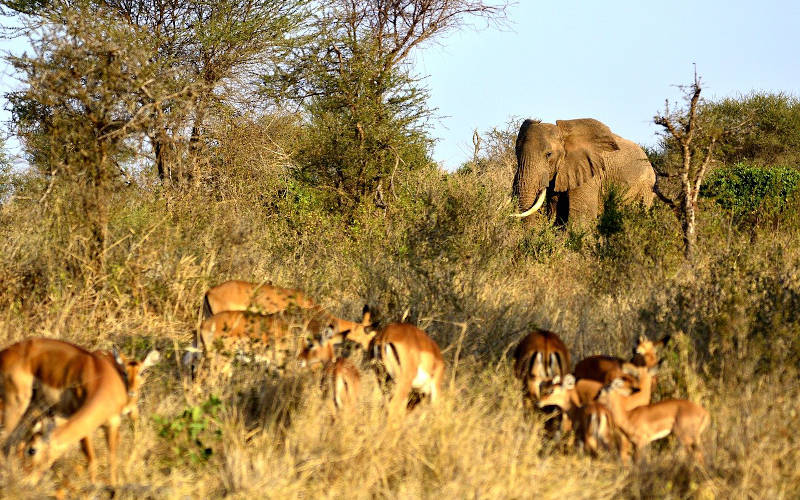
An elephant in the dense vegetation of Tarangire National Park
What can I do at Tarangire National Park?
There numerous things you can do at Tarangire National Park like night safaris, viewing the elephant herds, visiting the iconic baobab trees, and enjoying some tranquil birdwatching.
Like Serengeti, Tarangire experiences seasonal migrations. As water sources dry up from June to October, animals congregate around them in large numbers, offering a viewing of all the major safari animals in one spot.
The Tarangire River gets very crowded with wildlife, attracting many of the 300+ elephants.
There are huge baobab trees and even a seasonal swamp network. Other habitats include acacia shrubs and woodlands. The park also provides opulent birdwatching. Due to dense vegetation, many of the main predators are more difficult to spot here.
Tourists flock to the park from June to October. Those opting for morning or night drives should pack warm clothes. It gets very cold when the sun is down.
What can I do at Arusha National Park?
There numerous things you can do at Arusha National Park like canoeing, the popular walking safaris, birdwatching, during the wet season and even climbing Mount Meru.
Although it’s not as popular as other parks, it serves as an easy start to any safari. Contrary to the other parks, Arusha is best visited during the wet months, since the weather is more pleasant.
Wildlife viewing is best and migratory birds are present.
Right at the base of Mount Meru, Arusha has over 400 bird species and is wonderful for birdwatching. Buffalo, giraffe and antelope are also easily seen here, whilst the black-and-white colobus monkeys call the Arusha forests their home.
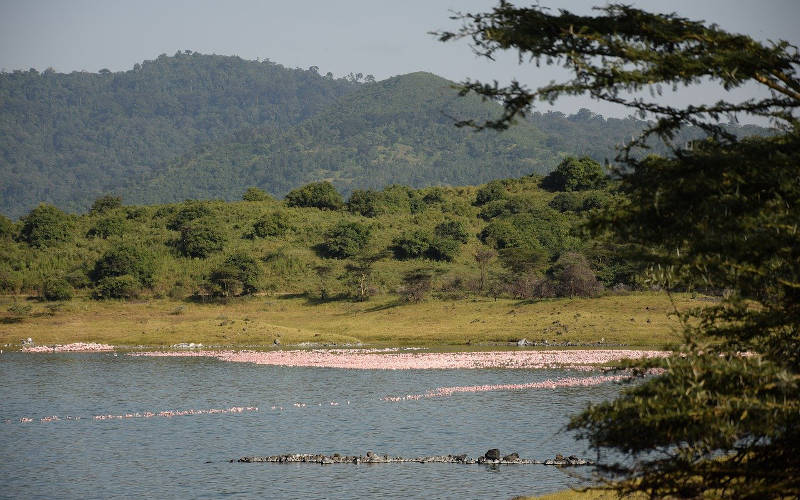
Arusha National Park
What can I do at Kilimanjaro National Park?
Apart from climbing Mount Kilimanjaro, you can do numerous things at Kilimanjaro National Park like viewing wildlife (elephants, buffalos, wildebeest and zebra), as well as doing some birdwatching during the serene wet months.
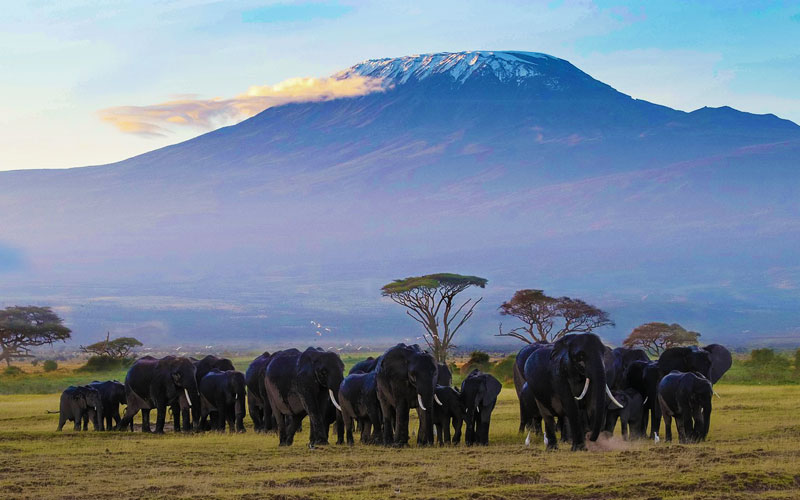
Kilimanjaro National Park
What are the best safari tours on the Northern Circuit?
The best and most popular safari tours on the Northern Circuit happen in national parks like Serengeti, Ngorongoro, Lake Manyara and Tarangire, which are near Mount Kilimanjaro.
Tourists tend to go on combined safari tours through the Northern Circuit and often add Arusha National Park, Kilimanjaro National Park, and even some of the famous southern national parks across in the border in Kenya like Masai Mara.
The hotels and parks often make travel agencies and their tours a priority. This is why booking with a reputable safari company is the best option. It is more difficult to book accommodation and tours on your own.
Where to stay? Here are 7 of my favourite accommodation options for Tanzanian safaris:
How much does a Northern Circuit Safari cost?
An excellent question. Northern Circuit Safaris typically cost anywhere between $1,300-$9,400 per person per day.
Safari prices can also vary widely based on the number of people and accommodation choices (from cosy lodges to 5-star luxury options).
Plus, there's the number of days you go on safari for that you should also take into account.
Below is a handy table outlining Northern Circuit Safari costs, ranging from budget, mid-range and luxury safari tours:
# of Days | Parks | Budget | Mid-Range | Luxury |
|---|---|---|---|---|
2 days | Arusha + Ngorongoro | from $1300 per person | from $1450 per person | from $3000 per person |
3 days | Arusha + Tarangire + Ngorongoro | from $1800 per person | from $2300 per person | from $5400 per person |
4 days | Lake Manyara + Ngorongoro + Serengeti (2 days) | from $2600 per person | from $3300 per person | from $6800 per person |
5 days | Lake Manyara + Ngorongoro + Serengeti (3 days) | from $3000 per person | from $4000 per person | from $8000 per person |
6 days | Tarangire + Lake Manyara + Ngorongoro + Serengeti (3 days) | from $3500 per person | from $4700 per person | from $9400 per person |
Please note: These prices are estimates for a 2-person safari tour and indicative of typical itineraries for Northern Circuit private safaris.
Tour operators sometimes mix and match itineraries in different ways. If you join a group safari or travel as a group on safari, then it will be cheaper than the above costs.
See my handy guides on safari costs and budget safaris for more details.
What parks can I visit in the Southern Circuit?
There are four parks you can visit in the Southern Circuit: Selous, Nyerere, Ruaha and Mikumi. There are lots of specialised safari tours that you can during your visit to these four southern jewels of unparalleled wilderness in Tanzania.
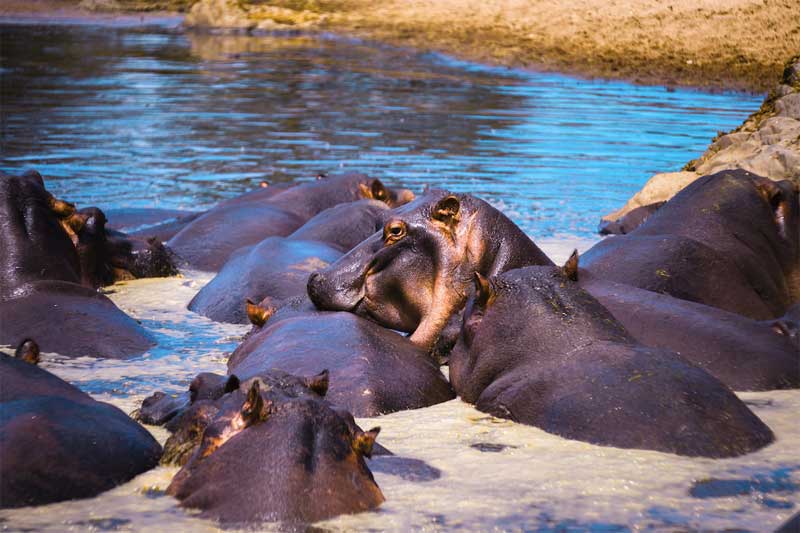
What can I do in Selous Game Reserve?
There are several things you can do in Selous Game Reserve like boat safaris, walking safaris, fly-camping or simply sleeping out in the wilderness. Selous is a large park servicing dry season travellers.
What can I do in Nyerere National Park?
There are several things you can do in Nyerere National Park like game drives, walking safaris, and boat trips.
Nyerere is located on the the Rufiji River and touring the park usually takes 2 to 3 days. The Rufiji River attracts lots of animals. It’s not uncommon to spot lions lazing on the shore.
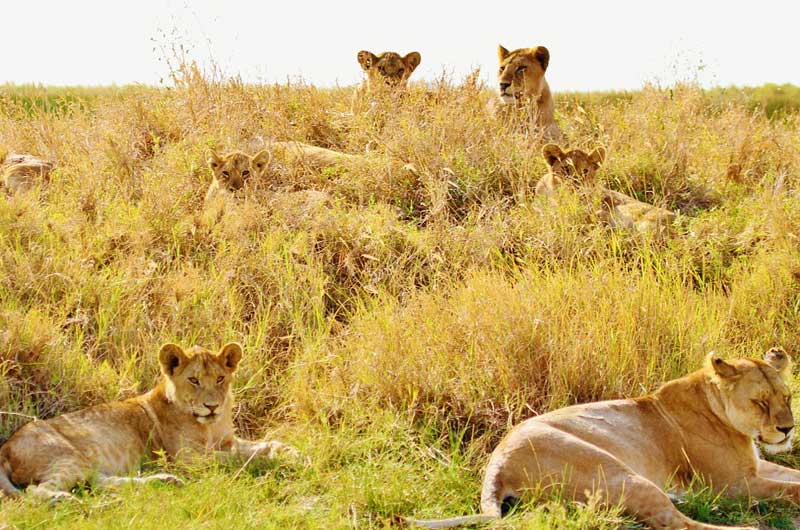
What can I do in Ruaha National Park?
There are several things you can do in Ruaha National Park like viewing the diverse wildlife. The endangered wild dogs are common in this park, especially in the mornings.
Lions and elephants are numerous and easily tracked. The park is also home to rare antelope species such as sable, roan, and kudu. It takes about 2 to 3 days to go on a safari tour through Ruaha.
What can I do in Mikumi National Park?
There are several things you can do in Mikumi National Park like viewing unique wildlife. The dry months offer the best game viewing opportunities.
The hippo pools make fantastic photos and allow for great birdwatching. In the open grassy plains, you can see buffalo, impala, wildebeest and zebra.
Mikumi is accessible from Dar es Salaam and makes for a great weekend safari since this tour usually takes about 1 to 2 days. It usually forms part of a tour en route to Nyerere.
Which tour? Here are 5 Southern Tanzania safari tours I highly recommend:
- Group Camping Safari that includes Tarangire and Ngorongoro (4 days)
- Budget Serengeti Safari (5 days)
- Scenic Northern Tanzania Safari (7 days)
- Serengeti Trail that includes Ngorongoro (8 days)
- Best of Kenya and Tanzania (incl. 6 national parks) (12 days)
See more Serengeti safari deals.
How long does a Western Circuit Safari usually take?
A Tanzania safari in the western circuit usually takes about one week. This is because tourists often do specialised safari tours like wildlife trekking, which can take several days to track and view wildlife throughout the parks.
What parks can I visit in the Western Circuit?
The main parks you can visit in the Western Circuit are Mahale, Gombe and Katavi. These parks are famous for their large chimpanzee communities and buffalo herds.
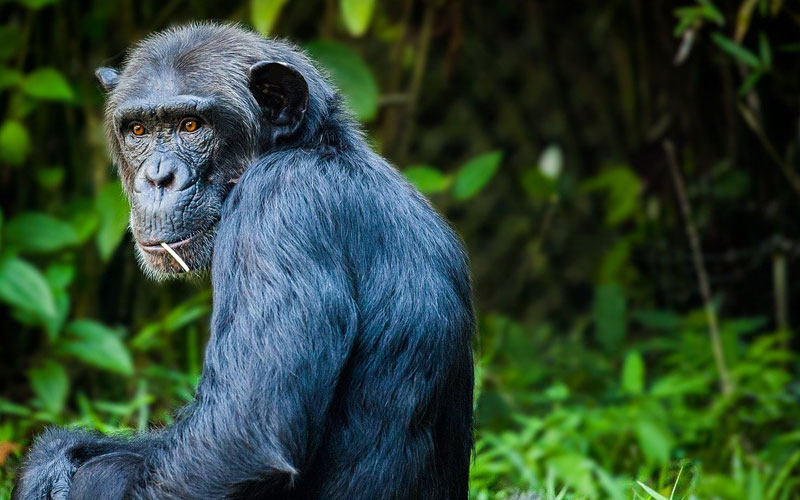
What are Mahale Mountains and Gombe National Park most famous for?
That's easy. Mahale Mountains and Gombe National Park are most famous for their chimpanzee trekking. Tanzania is one of the best places in the world to track these primates.
For safety reasons, you can only track habituated chimpanzees in their natural habitat. Chimpanzees are not the only primates in this forest though.
Other primates include the red-tailed monkey, blue monkey, red colobus monkey, and the olive baboon.
Mahale and Gombe are located on one of Africa’s Great Lakes, Lake Tanganyika, which is the longest freshwater lake in the world, and the second deepest.
If chimpanzee trekking is not for you, you can always go snorkelling and view the diverse aquatic wildlife species instead.
These parks are very secluded throughout the year and a safari in either Mahale or Gombe takes between 2 and 5 days.
Which tour? Here are 3 of my favourite Gombe and Mahale safaris I highly recommend:
- Budget Chimpanzee Safari (2 days)
- Gombe Chimpanzee Tour (4 days)
- Mahale Chimpanzee Tracking Adventure (4 days)
See more Western Tanzania safari deals.
What can I do in Katavi National Park?
There are several things you can do in Katavi National Park like enjoying excellent wildlife viewing in the dry months. Katavi has an amazing wilderness appeal and one of the largest buffalo herds in the world.
The hippo pods are particularly easy to see here too. The pods tend to gather together during the dry months.
You might also encounter some rare sable and roan antelope during your visit. A Katavi safari takes between 2 to 5 days.
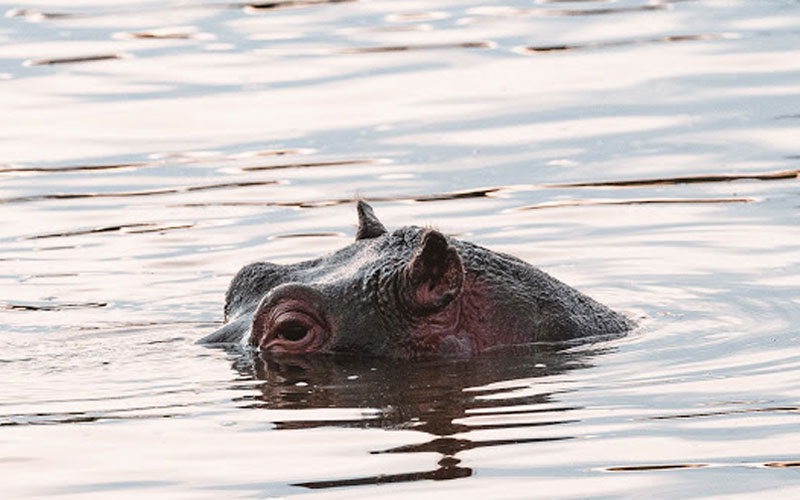
Tanzania vs Kenya: Which is the better safari destination?
Generally speaking, Tanzania Safaris are more popular and the better safari destination in contrast with Kenya. This has to do with several factors like size and geography.
Tanzania is bigger than Kenya, which means Tanzania has more tourist spots to visit like Serengeti for the Great Wildebeest Migration, Kilimanjaro for mountain trekking and safaris, and Zanzibar for a combined safari and beach holiday.
Nonetheless, Kenya and Tanzania are great safari destinations in their own right. The main differences are that Kenya is less visited than Tanzania, making Kenya a much cheaper safari experience.
Read more in my other guides on the best times of year to visit Tanzania and Kenya and choosing between a Tanzanian or Kenyan safari.
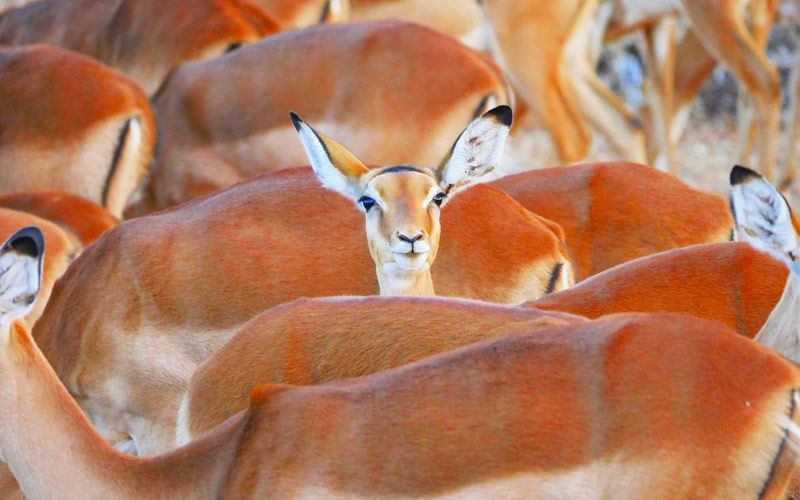
What are some Tanzania Safari highlights?
Some major highlights of a Tanzania Safari are:
- The Wildebeest Migration
- Mount Kilimanjaro
- The Big Five, including tree climbing lions in Lake Manyara
- Mount Meru
- Ngorongoro Crater
- Serengeti – a UNESCO World Heritage Site
- Chimpanzee trekking in Gombe and Mahale
- Tropical beaches in Zanzibar with their perfect weather (after your safari experience)
What are some Kenya Safari highlights?
Some major highlights of a Kenya Safari are:
- The northern portion of the Wildebeest Migration
- The Great Rift Valley
- Mount Kenya
- Flamingoes at Lake Nakuru
- Big Five
- Coastal beaches around Mombasa
- Arguably the best birdwatching in Africa
- Cultural and wildlife experience in Maasai Mara National Park is fantastic
Which tour? Here are 5 Tanzania-Kenya safaris I highly recommend:
- Serengeti Trail Safari (incl. Nairobi, Kisii and Kisumu) (8 days)
- Masai Camping Safari (incl. Serengeti and Lake Manyara) (10 days)
- Best of Kenya and Tanzania (incl. Amboseli and Tarangire) (12 days)
- Kenya and Tanzania Camping Safari (incl. Maasai Mara and Lake Nakuru) (14 days)
- Best of East Africa (incl. Subukloita Hills and Zanzibar) (20 days)
See more Tanzania and Kenya safari deals.
What are Tanzania’s vaccination requirements?
Tanzania has several vaccination requirements, particularly for malaria. Malaria is a risk in most Tanzanian parks, especially during the rainy months from November to May.
I recommend taking malaria medication but consult your doctor first. There are few exceptions such as Ngorongoro Crater and Mount Kilimanjaro. The higher altitudes are generally safe from malaria.
Consult your travel doctor/travel clinic about which vaccinations you will need for Tanzania. Alternatively, check out the Tanzania section on the NHS Fit for Travel site or the CDC.
You can find the latest information on the Coronavirus in Tanzania here.

Do I need travel insurance for Tanzania?
Travel insurance is not mandatory but it’s always a good idea to have basic insurance cover.
Tanzania and its parks are safe safari destinations, but accidents can happen at any time. More common travel insurance claims relate to lost baggage, and flight and tour cancellations.
Your insurance should have medical, repatriation, and emergency coverage, among others. If you are also climbing Kilimanjaro, you will need to add the specialist activity, “hiking up to 6,000m” to your insurance.
I recommend Rise & Shield for your East African travel insurance needs. Get a quick quote.
Conclusion
I hope you enjoyed this article on Tanzania Safaris! With so many national parks to choose from with affordable tour packages, you won't have any trouble planning and enjoying an incredible East African safari experience.

Kenya has wonderful parks and regions. My favorites north to south. Samburu and Laikipia, the Maasai Mara especially its “triangle section” and Amboseli, and Tsavo East.